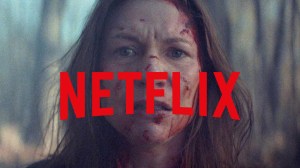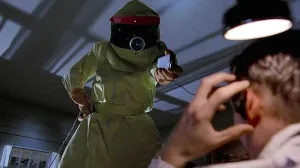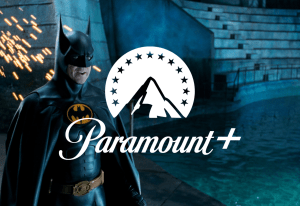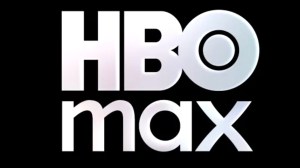Ever since his debut film The Blackcoat’s Daughter, filmmaker Osgood Perkins has earned a reputation for delivering audiences dark, dreadful, and atmospheric horror films. One of last year’s most talked-about movies was his Longlegs, which delivered audiences a unique blend of iconic horror tropes for an eerie and unsettling experience, while previous efforts I Am the Pretty Thing That Lives in the House and Gretel & Hansel also fully embraced creepy and ominous atmospheres. While many might be expecting his latest movie, the Stephen King adaptation The Monkey, to be another entirely oppressing and grim adventure, Perkins manages to both honor the core components of the source material yet also expand his oeuvre by injecting gut-busting violence and pitch-black comedy with this chaotic and cathartic meditation on generational trauma.
Videos by ComicBook.com
While rummaging through the possessions of their recently exited father, twins Hal and Bill (both played by Christian Convery) discover a creepy, wind-up monkey. The only problem is that, whenever the automated monkey stops banging on his drum, someone close to them dies a bizarre death, resulting in them attempting to eradicate the object. 25 years later, now-adult Hal and Bill (both played by Theo James) think they have moved on from the relic, only for bizarre deaths to once again start up, forcing them to attempt to put an end to things once and for all.
Throughout Stephen King’s career, dozens of his stories have been adapted into live-action projects, many of which maintain the tone of the source material. While there are outliers like Stand by Me, The Shawshank Redemption, and The Green Mile that are emotionally engaging dramas, it’s been his tales of terror that have cemented his legacy in literature and on screen. The Shining, Carrie, Misery, and IT are all relatively straightforward horror pictures, and while there’s still some humor to be found in these experiences, they have stuck with audiences for their tension. That said, while there are a number of iconic King adaptations, there are even more entirely ineffective live-action explorations, largely due to how faithful these projects aim to be.
All this to say, some of King’s concepts work great on paper and fall entirely flat when brought to life for a movie or TV series, largely due to the tonal challenges that are inherent to King’s prose. Rarely are his books only ever one thing, as they often take horror premises and use that structure to explore entirely human themes, and also contain their fair share of humor. The Monkey might not be setting a new standard of excellence for King adaptations, but by Perkins merely leaning into the lunacy of the core premise, he showcased that creatives don’t need to be entirely beholden to expectations of King’s legacy in horror to deliver a satisfying experience that honors the source material yet puts a fresh spin on King-created scenarios.
The Monkey‘s opening scene immediately tips audiences off to the fact that this isn’t a traditional King experience, as it features a hilarious bit of gruesome violence that shares more in spirit with the Looney Tunes than it does with any other King movie. Over the course of the film, audiences are delivered a copious amount of brutal and shocking deaths, ranging from decapitations to electrocutions, as we ultimately lose count of how many bodies and body parts have just outright exploded. These death scenes are so incredibly absurd (and gleefully delightful) that viewers can’t help but cackle in disbelief at what we just witnessed. There have been plenty of horrifying deaths in King movies, but The Monkey has set a new standard for just how far a filmmaker can push the envelope in such adaptations.
While many other movies put bodily dismemberment at the forefront of their narratives, these projects typically take their time with their violence to make the audience squirm not just with the visuals, but also as we try to grasp what these sensations must feel like. The Monkey doesn’t deliver violence for violence’s sake, but uses the outlandish and sudden carnage to showcase the absurdity of death as a concept. The bombastic bloodshed might be what draws audiences to theaters, though Perkins still manages to inject some deeper insight into the human experience in between all the bodies exploding.
At one point in the movie, Hal and Bill’s mom Lois (Tatiana Maslany) offers the insight, “Everybody dies. And that’s life,” in a moment that is somewhat played for laughs. The sequence in question highlights that death is the biggest caveat for everyone alive, as it’s an inescapable fate. Even though this nugget of insight is buried between characters comedically talking about death as if it’s like getting a parking ticket or being selected for jury duty, it’s still an accurate reflection of an all-too-real finality we must grasp. No matter how mundane or unbelievable the scenarios might be in which we meet our end, we’re going to lose everyone we love at some point, and while we can understandably become fixated on this depressing certainty, time might be better spent appreciating all the moments that lead up to that destination.
Mortality isn’t the only topic Perkins aims to explore with his film, as there’s a running theme of absentee fathers passing down their worst traits to their children. In The Monkey, it’s the curse of having to watch over a supernaturally powered toy that can cause the unexpected deaths of anyone surrounding the person who turns the key, though it’s quite clear that this is meant to serve as a metaphor for less obvious character flaws. Hal only sees his estranged son Petey (Colin O’Brien) once a week every year, and while other characters empathize with this difficult situation, Hal admits he imposed this situation in hopes of protecting Petey from having to deal with the mechanical monkey. In addition to this being meant to represent the anxieties parents have of passing down their own trauma to their children, it also serves to represent anyone who keeps people at safe distances in attempts to hide any parts of them they don’t want to be vulnerable enough to expose. As reflected in more macabre ways with The Monkey, though, no matter how long you try to hide the worst parts of yourself, it’s only a matter of time before those traumas resurface, as the film reminds audiences that it’s better to come to terms with your entire emotional spectrum so you can monitor even the darker parts as opposed to trying to lock them away from everyone indefinitely.
The balance of absurdity and more heartfelt moments will cause some challenges for audiences, as there’s not always a satisfying balance of the two tones (even though James, O’Brien, and Convery have a strong grasp of the material). Even though the opening scene fully establishes the sardonic sense of humor of the movie, there are longer stretches of time that are fully devoid of that humor, so when the satirical humor does return, it can be a bit jarring. The explosive deaths are incredibly intentional tonal shifts for the story, but there are many more subtle moments in which Perkins shifts from Hal’s authentic struggles with his past to much more sarcastic, macabre humor, so some audiences might not be able to get on The Monkey‘s wavelength. Much like Longlegs had passionate fans yet alienated audiences who anticipated a different type of movie, The Monkey is sure to take many viewers by surprise and likely frustrate those who anticipated a more straightforward experience in terror. Additionally, we can’t help but wish there was a stronger embrace of practical effects, as the various explosions of body parts and the deformed aftermath of such violence would have been all the more gleeful if they weren’t so reliant on CGI.
Nearly a decade after his directorial debut, The Monkey shows an all-new side of Perkins that we look forward to getting more of. While the ominous and dour tones of his on-screen experiences might make fans think he’s personally a downtrodden individual, this King adaptation delivers one of the more raucous horror movies of the year that authentically captures both the emotional insight and tongue-in-cheek humor that draws readers to King. Even if The Monkey doesn’t entirely break new ground for the genre, it’s a major and necessary step forward both for Perkins and for King adaptations as a whole, igniting excitement in what could be next for Perkins’s career and how he’ll inspire future filmmakers who tackle King’s legacy.
Rating: 4 out of 5
The Monkey lands in theaters on February 21st.








